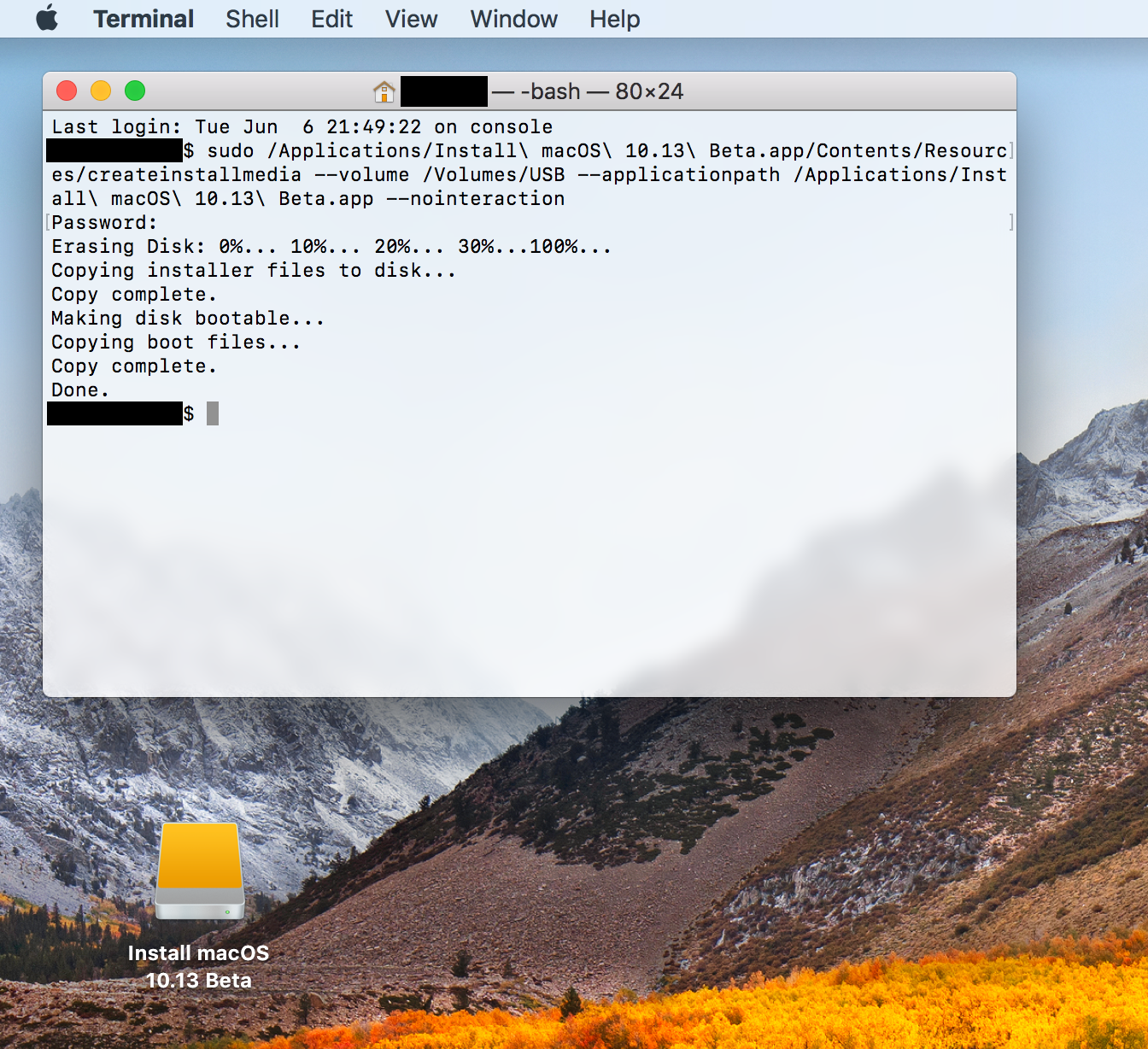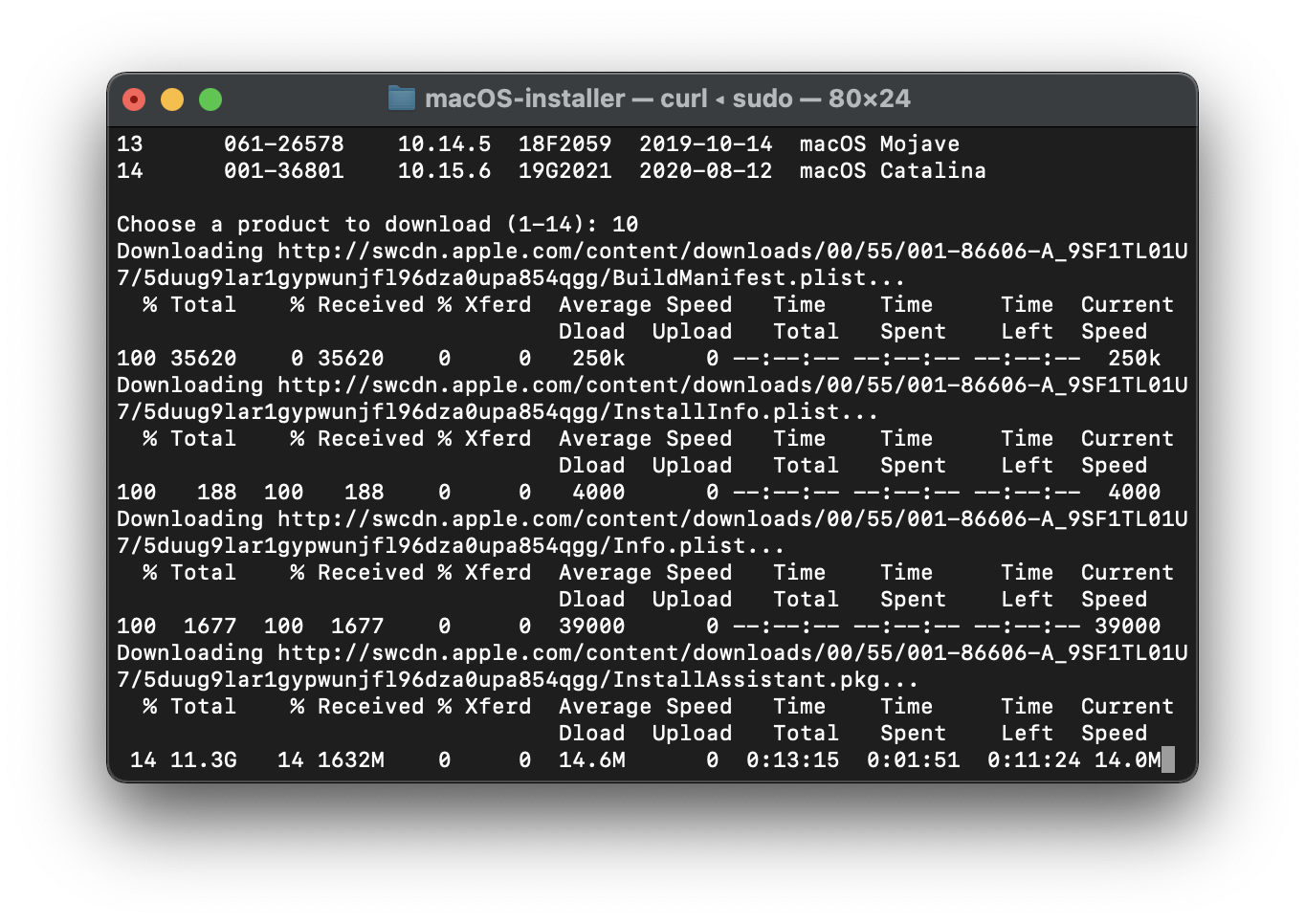- Createinstallmedia Os X Lion
- Osx Create Install Media
- Osx Createinstallmedia Command
- Install Media Player
- Mar 23, 2021 For more information about the createinstallmedia command and the arguments that you can use with it, make sure that the macOS installer is in your Applications folder, then enter the appropriate path in Terminal.
- For more information about the createinstallmedia command and the arguments that you can use with it, make sure that the macOS installer is in your Applications folder, then enter the appropriate path in Terminal.
Mac用户Telegram电报群 注意: 请在50秒内验证提问 https://t.me/macosx.
: The instructions to create an ISO from any OSX Install application are covered in another article.Createinstallmedia Os X Lion
Install OSX 10.13


- Create a new VM with the 10.13 template. Accept the defaults, with the exception of RAM (at least 3 GB), number of vCPUs (at least 2) and amount of HD (according to your needs, no less than 10 GB). Also make sure that USB3 controller is selected under the Ports » USB. Choose the newly created ISO as your boot medium.
NOTE: Do NOT designate your virtual HD as an 'SSD'. The installation WILL fail if you do that, because the OSX installer will convert the filesystem to APFS, something that the VirtualBox EFI can not handle. - Start the VM. It may seem that the installation stalls but don't shut the VM, be patient. Specifically, right before you switch to the graphics with the Apple logo and the progress bar, you'll get stuck at the point where the OSX ≥ 10.12.4 gets stuck:
- After selecting the language, open 'Disk Utility'. For reasons that only Apple engineers understand, you will *not* see your hard drive! Instead you'll see a bunch of partitions that are of no interest to you whatsoever (see NOTE below). On the top-left side, click on the 'View' drop-down and select 'Show All Devices'. Now you'll see your 'VBOX HARDDISK Medium'. Select it and choose 'Erase' from the toolbar. Leave the defaults (HFS+J/GUID), except maybe the name, choose anything you like. Quit 'Disk Utility' once done.
NOTE: This 'glitch' has been fixed with 10.13.2. Now the hard disk shows properly when Disk Utility is opened. - Select 'Install macOS'. Continue and agree to the license. This will start a phase where the actual installer is copied to the Recovery Partition of the hard disk that you selected. That part is rather quick, lasting less than a couple of minutes on an SSD drive. After that your VM reboots. But, you won't re-boot into the OSX installation phase, you'll restart the whole installation again from scratch! Houston, we have a problem!!! If you're observant, you'll notice a quick message coming up, right before the VM boots again from the ISO to restart the whole installation process:
- Apple (another wise move) has modified the way that it reads/treats the different partitions in the EFI, something that currently VirtualBox cannot handle (as of 5.2.2). But, there is a solution. Once you find yourself up and running, right after the language selection step, shut down the VM and eject the 10.13 ISO that you booted from. Then boot the VM again. You get dropped in the EFI Shell.
- You need to keep resetting the VM (HostKey+R) and press any key until you get into the EFI menu screen. If you don't succeed, and you end up in the EFI shell, enter 'exit'. That will you get to the EFI menu, shown below:
- Select the 'Boot Maintenance Manager' option, then 'Boot from File'. Now, you should have two options. The first one is your normal Boot partition, but this is not yet working, because you haven't yet installed 10.13. This is where the VM should be booting up from normally, and this is why it fails to boot. The second partition however is your Recovery partition. This is the one you should boot from to do the installation. This could be also used to do a re-installation of 10.13, just like on a real system, should the need arise.
- BootFromFile.png (48.02 KiB) Viewed 92420 times
- Choose the second option, then '<macOS Install Data>', then 'Locked Files', then 'Boot Files', and finally 'boot.efi' and let the games begin!
- That second part of the installation is where 10.13 actually gets installed. This is going to take substantially more time, about 20-30 min with the VM consuming every available CPU cycle. The VM will reboot a couple of times but you should be all set.
These advanced steps are primarily for system administrators and others who are familiar with the command line. You don't need a bootable installer to upgrade macOS or reinstall macOS, but it can be useful when you want to install on multiple computers without downloading the installer each time.

What you need to create a bootable installer
- A USB flash drive or other secondary volume formatted as Mac OS Extended, with at least 14GB of available storage
- A downloaded installer for macOS Big Sur, Catalina, Mojave, High Sierra, or El Capitan
Download macOS
- Download: macOS Big Sur, macOS Catalina, macOS Mojave, or macOS High Sierra
These download to your Applications folder as an app named Install macOS [version name]. If the installer opens after downloading, quit it without continuing installation. To get the correct installer, download from a Mac that is using macOS Sierra 10.12.5 or later, or El Capitan 10.11.6. Enterprise administrators, please download from Apple, not a locally hosted software-update server. - Download: OS X El Capitan
This downloads as a disk image named InstallMacOSX.dmg. On a Mac that is compatible with El Capitan, open the disk image and run the installer within, named InstallMacOSX.pkg. It installs an app named Install OS X El Capitan into your Applications folder. You will create the bootable installer from this app, not from the disk image or .pkg installer.
Use the 'createinstallmedia' command in Terminal
- Connect the USB flash drive or other volume that you're using for the bootable installer.
- Open Terminal, which is in the Utilities folder of your Applications folder.
- Type or paste one of the following commands in Terminal. These assume that the installer is in your Applications folder, and MyVolume is the name of the USB flash drive or other volume you're using. If it has a different name, replace
MyVolumein these commands with the name of your volume.
Big Sur:*
Catalina:*
Mojave:*
High Sierra:*
El Capitan:
* If your Mac is using macOS Sierra or earlier, include the --applicationpath argument and installer path, similar to the way this is done in the command for El Capitan.
After typing the command:
- Press Return to enter the command.
- When prompted, type your administrator password and press Return again. Terminal doesn't show any characters as you type your password.
- When prompted, type
Yto confirm that you want to erase the volume, then press Return. Terminal shows the progress as the volume is erased. - After the volume is erased, you may see an alert that Terminal would like to access files on a removable volume. Click OK to allow the copy to proceed.
- When Terminal says that it's done, the volume will have the same name as the installer you downloaded, such as Install macOS Big Sur. You can now quit Terminal and eject the volume.
Use the bootable installer

Determine whether you're using a Mac with Apple silicon, then follow the appropriate steps:
Apple silicon
- Plug the bootable installer into a Mac that is connected to the internet and compatible with the version of macOS you're installing.
- Turn on your Mac and continue to hold the power button until you see the startup options window, which shows your bootable volumes and a gear icon labled Options.
- Select the volume containing the bootable installer, then click Continue.
- When the macOS installer opens, follow the onscreen instructions.
Intel processor
- Plug the bootable installer into a Mac that is connected to the internet and compatible with the version of macOS you're installing.
- Press and hold the Option (Alt) ⌥ key immediately after turning on or restarting your Mac.
- Release the Option key when you see a dark screen showing your bootable volumes.
- Select the volume containing the bootable installer. Then click the up arrow or press Return.
If you can't start up from the bootable installer, make sure that the External Boot setting in Startup Security Utility is set to allow booting from external media. - Choose your language, if prompted.
- Select Install macOS (or Install OS X) from the Utilities window, then click Continue and follow the onscreen instructions.
Osx Create Install Media
Learn more
For more information about the createinstallmedia command and the arguments that you can use with it, make sure that the macOS installer is in your Applications folder, then enter the appropriate path in Terminal:
Osx Createinstallmedia Command
- Big Sur: /Applications/Install macOS Big Sur.app/Contents/Resources/createinstallmedia
- Catalina: /Applications/Install macOS Catalina.app/Contents/Resources/createinstallmedia
- Mojave: /Applications/Install macOS Mojave.app/Contents/Resources/createinstallmedia
- High Sierra: /Applications/Install macOS High Sierra.app/Contents/Resources/createinstallmedia
- El Capitan: /Applications/Install OS X El Capitan.app/Contents/Resources/createinstallmedia
Install Media Player
A bootable installer doesn't download macOS from the internet, but it does require an internet connection to get firmware and other information specific to the Mac model.




